Nigerian Floral Company, Omar Gardens, offer an insightful article that highlights 10 shrubs sure to make a fine addition to any tropical garden.
They note that the blossoming flowers and coloured leaves of shrubbery help to highlight and bring out the beauty in a garden and could also be used to construct ‘natural fences’. Here are their 10 favourite shrubs, as seen on their blog:
1. Paper Gardenia (Tabernaemontana)
The paper Gardenia is a large evergreen shrub. It has waxy, pure, white, ruffle-edged flowers, which are especially fragrant after dark. It can be grown in full or partial shade but to achieve your desired shape, you need to prune the plant lightly.
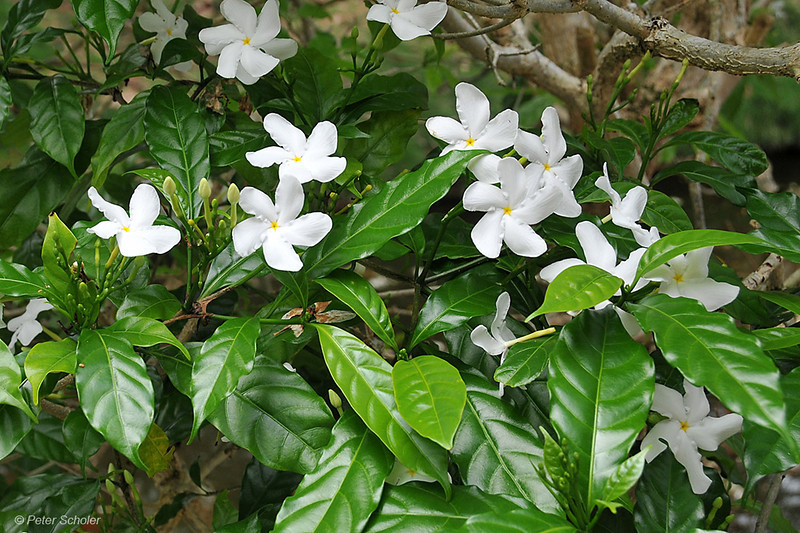 Paper Gardenia
Paper GardeniaIf your garden is a new one, this beautiful shrub’s rather fast growth rate makes it a perfect match. If your garden is a shady one, even better as it provides structure and form.
Tip: You should watch out for Scale insects and Aphids if you are growing this plant indoors.
2. Hibiscus (Single red and white varieties)
Picture having hummingbirds and butterflies in your garden all the time! They are not there for you, they are there for your Hibiscus plant. This shrub is even more desirable because they grow tall (and beautiful) and are more resistant to disease. You know what they say about the hibiscus shrub? It adds flair to your garden. Carefully tending to hibiscus plants will reward you will many lovely years of exotic flowers.
 Hibiscus
HibiscusTip: if you are growing your hibiscus in a container, make sure you provide your plant with at least six hours of sunlight- they really work for those lovely blooms. Sunlight doesn’t necessarily mean overly hot, you may want to provide shade for the plants when it’s really hot in the afternoon.
3. Mickey mouse plant (Ochna serrulata)
Before you wonder, the Mickey Mouse plant is not named because of the leaves or blooms, but for the black beautiful berries that resemble the face of Mickey Mouse (It’s true!) If you are looking to attract butterflies and bees to your garden, this plant is a suitable choice.
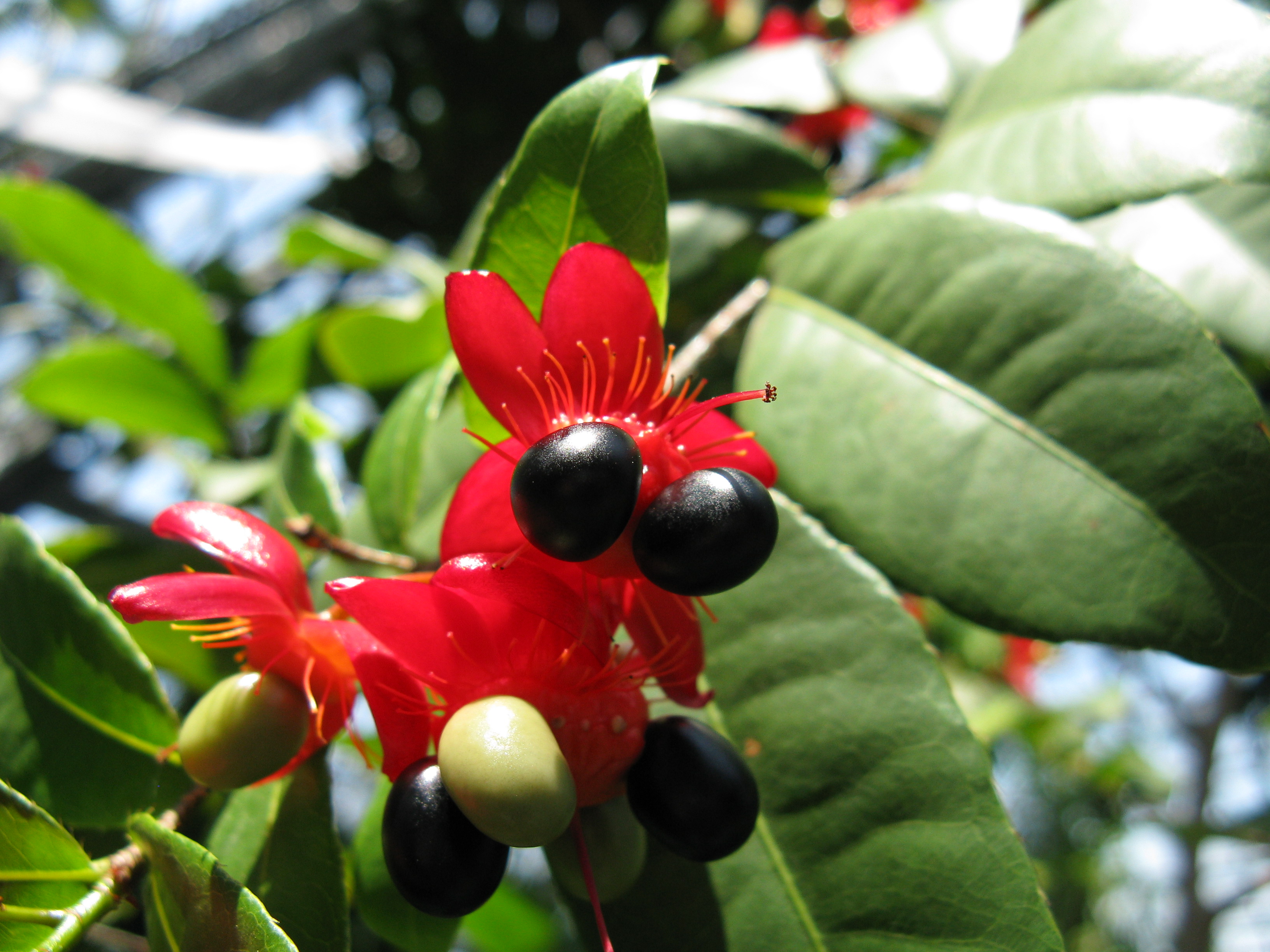 Mickey Mouse Plant
Mickey Mouse PlantTo achieve a really beautiful shape (or even your desired shape) it needs a bit of pruning when it’s still young. So you can have a little fun experimenting with it. Also known as carnival bush, The plant is a small, semi-evergreen shrub that reaches mature heights of 3 to 8 feet.
Tip: The seed may be poisonous, so keep that in mind and be careful if you have children or pets around.
4. Pride of Barbados (Caselpina Pulcherima)
The scientific name Pulcherima literally means “very pretty” and this plant definitely lives up to the name. It is called the Pride of Barbados for a reason! The great heat loving shrub has incredible terminal flower clusters showing an orange-red with a tinge of gold on the edges.
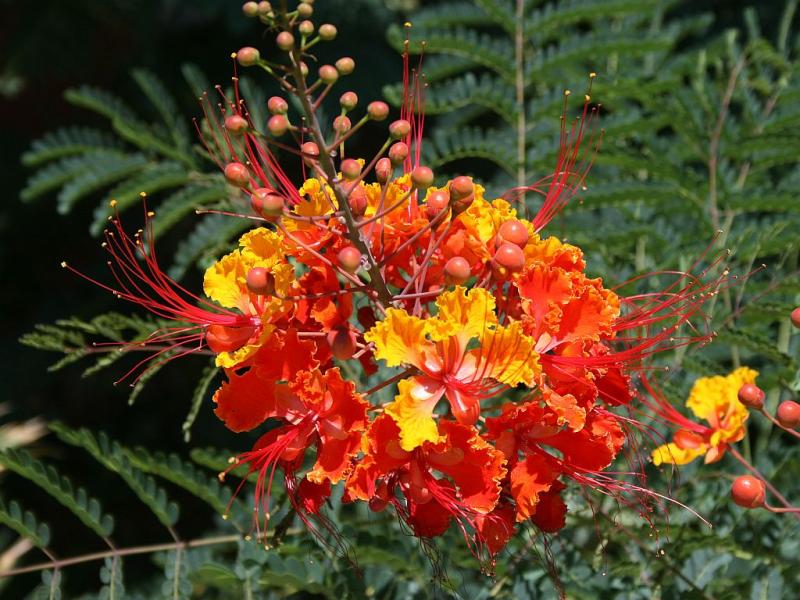 Pride of Barbardos
Pride of BarbardosEach flower is composed of five showy petals with very prominent six inch long red stamens. Pride of Barbados is very hardy and blooms throughout the year, giving your garden a nice colourful boost.
Tip: This plant needs full sun, well drained, alkaline to acidic soil
5. Single Red Ixora Bright Red flowers (Ixora Javanica)
Like the Pride of Barbados, The Ixora flowers also bloom throughout the year. This shrub grows best in full sun but it can tolerate light shade. If you want to do some container planting, this flower is an excellent choice.
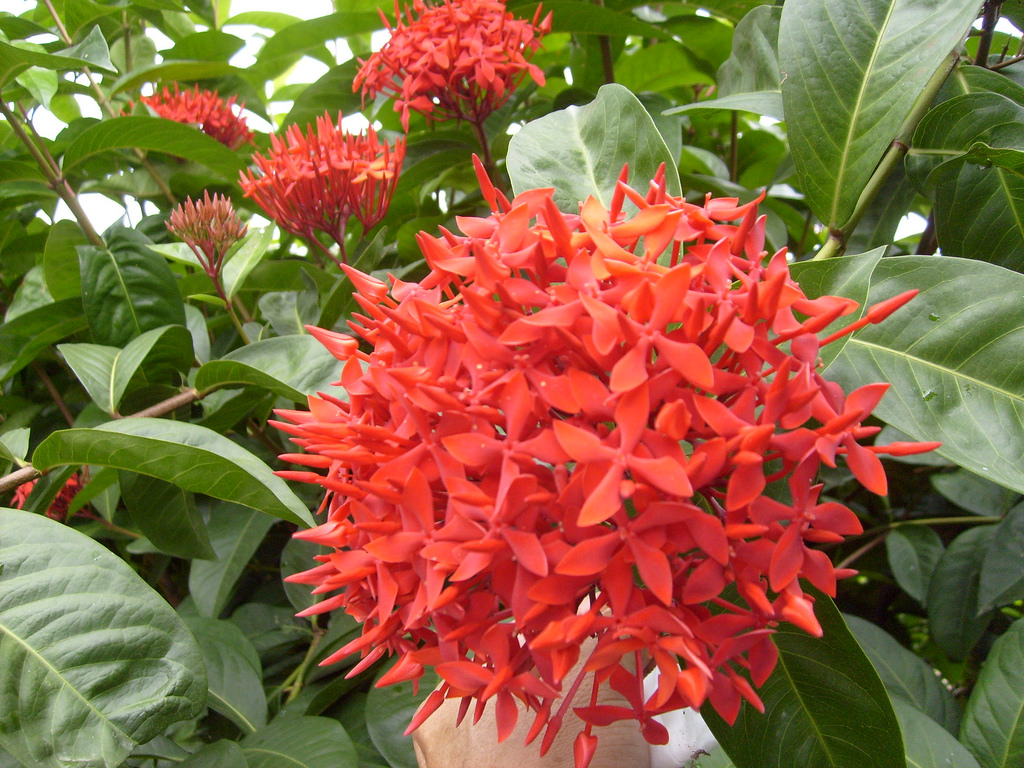 Ixora Javanica
Ixora JavanicaIxora is susceptible to hard pruning which makes it excellent for hedges. Don’t worry, the flowers are attractive to hummingbirds, bees, butterflies and other nectar-seeking insect pollinators too! If you are looking to cut flowers in vases or floral arrangement, this is your plant.
Tip: You should prune this shrub annually to keep bush in shape and encourage flowering.
6. Oleander (Nerium Oleander)
This is a classic case of beauty and the beast. Oleander is your candidate for the most poisonous and most beautiful plant. It is an evergreen shrub (or small tree) that grows to approximately 6 m. A sticky latex is exuded if the stem is cut. The leaves are usually in groups of three while the flowers are tubular with five lobes.
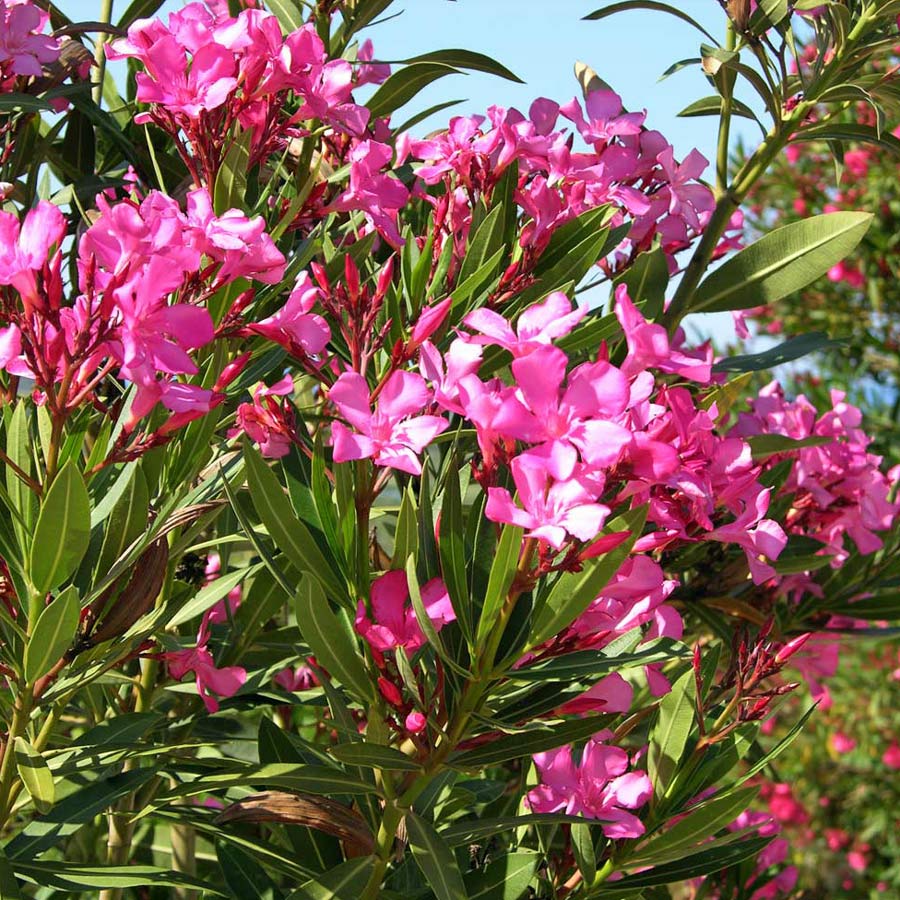 Oleander
Oleander
They could be red or pink in the wild but they may also be white, cream, yellow or purple in cultivars. The good news? Some of them are scented. The poisonous nature of Oleander does have one advantage: The leaves slow insecticidal activity against sugarcane mite and citrus leafminer.
7. Climber (Clerodendrum)
This is a large climber with a very profuse flowering habit. Clerodendrum is usually planted against fences over archways and columns. These beautiful shrubs enjoy growing in sun and they prefer rich, loamy soils that drain well.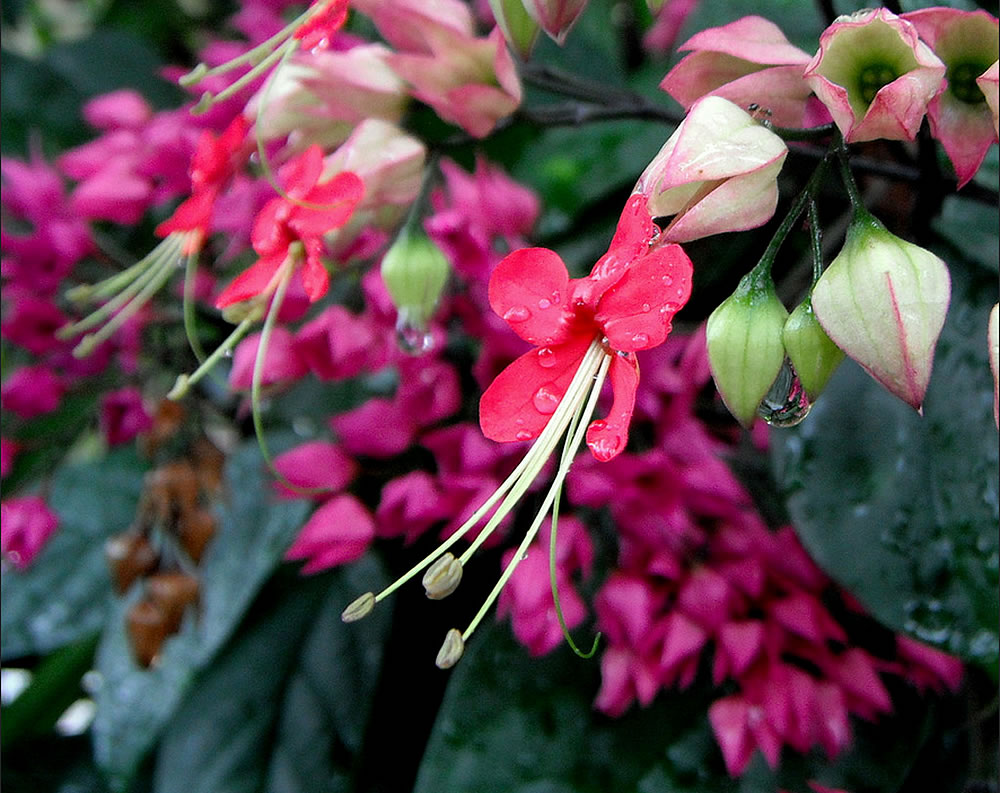
Clerodendrum
Prune them regularly to encourage new growth that will produce masses of beautiful flowers. To ensure prolific blooming, you should apply plant food or water soluble fertilizer with high potassium content every month.
Tip: The clerodendrum is easily affected by mealybugs and spider mites. You can treat using insecticides or alternatively, remove mealybugs with an alcohol saturated cotton swab. You can also wash the plants with soapy water. If your clerodendrum doesn’t bloom, it’s because it isn’t getting enough light. Try moving it to where it will get indirect light.
8. Climber (Bougainvillea)
In one word, the bougainvillea is breathtaking! Just one little detail- it is not for lazy gardeners. Without regular light pruning and training, your “bougie” is at risk of running wild.
Once you understand their growth habit- Bougainvilleas are climbers- which is why they produce such thick stems with large thorns that hook into things as they reach towards the light.
 Bougainvillea
BougainvilleaThe best thing to do is to train your climber to the size and shape you want. After doing that, all you have to do is keep clipping the tips of the shorter bushier growth straight after each flush of blooms has finished.
Tip: They need at least six hours of sunlight a day to produce the bloom that we love.
9. Cabbage Tree (Cordyline Fruticosa)
Commonly referred to as “ti plant”, it grows as a shrub or small tree up to 10 feet tall. You need to provide the ti plant with proper care- it ensures vigorous growth and attractive foliage and encourages flowering once the plant is mature.
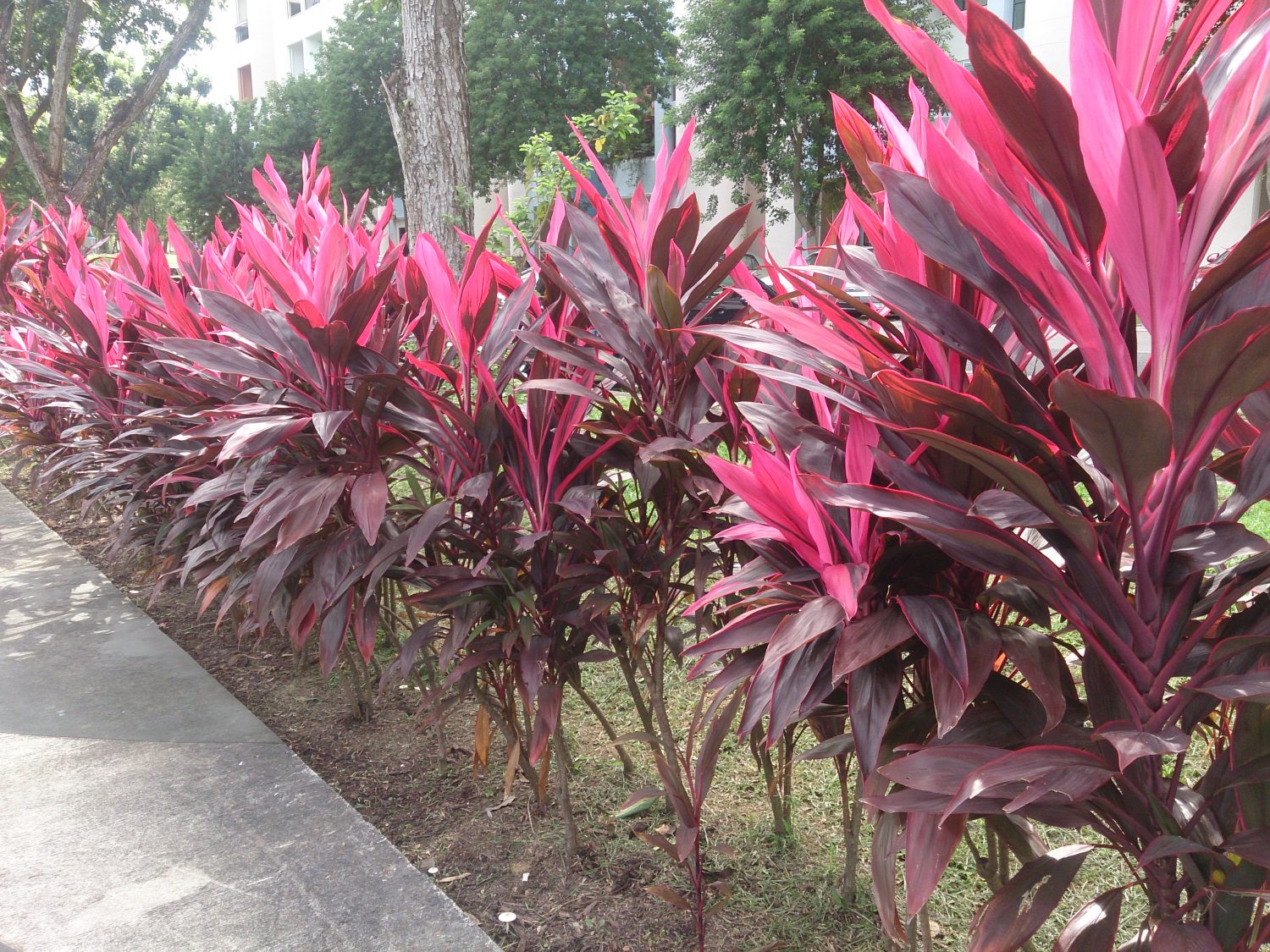 Cabbage Tree
Cabbage Tree
Tip: This plant likes partial shade to full sun. If you are going to keep it out in the sun, you should take care to water it often.
10. Croton (Codiaeum Variegatum)
The plants are leathery leaves in bold colors of yellow, pink, red, orange and green giving it the nickname “Joseph’s Coat”. It is a woody-based perennial that typically grows to 6’ tall.
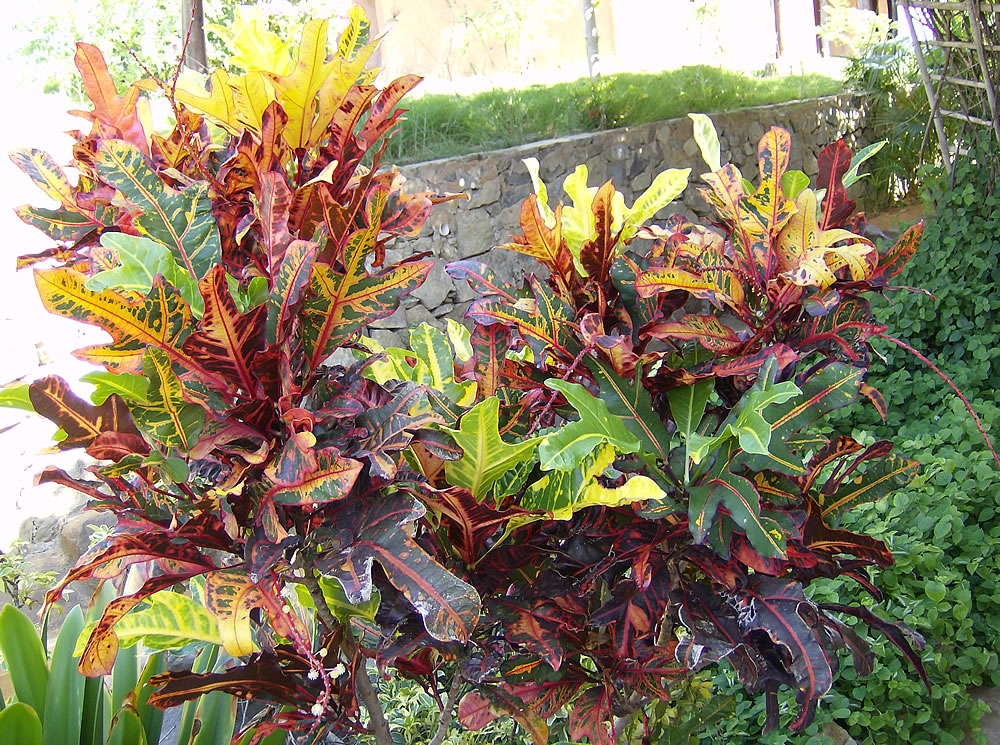 Croton
Croton




